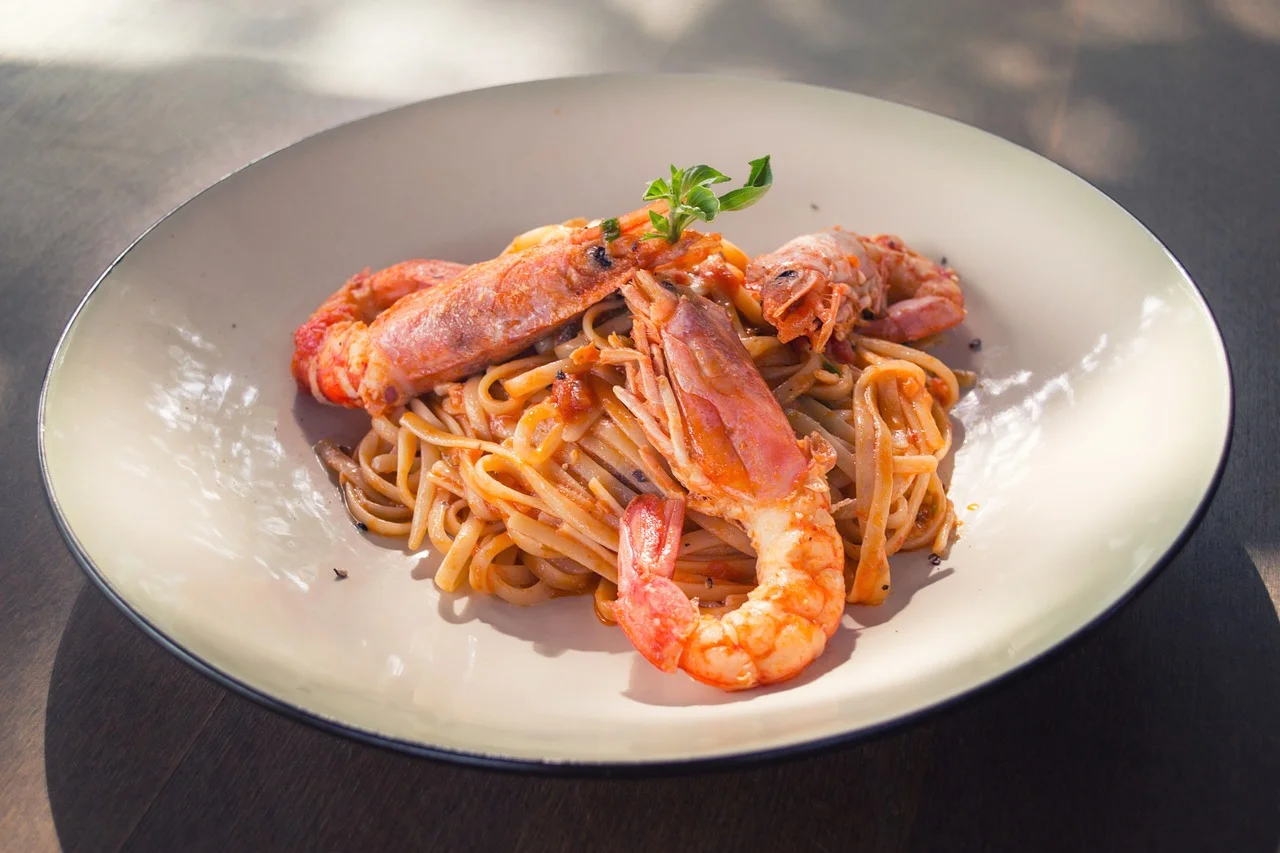Introduction to Shrimp Recipes
Shrimp, renowned for its delicate flavor and versatility, holds a cherished place in cuisines worldwide. From gourmet dishes to everyday meals, the culinary world embraces shrimp for its unparalleled taste and adaptability. As a rich source of protein, shrimp not only satisfies appetites but also adds depth and complexity to a wide array of recipes. Let’s delve into the enchanting realm of shrimp recipes, where creativity knows no bounds, and delicious possibilities await.
Health Benefits of Shrimp
Shrimp boasts an impressive nutritional profile, making it a valuable addition to any diet. Rich in protein, vitamins, and minerals, shrimp offers a plethora of health benefits beyond its delectable taste. Here are some key reasons why incorporating shrimp into your meals can support overall well-being:
Protein Powerhouse:
Shrimp is a protein-rich food, providing essential amino acids necessary for muscle repair and growth. A single serving of shrimp offers a substantial portion of your daily protein needs, making it an excellent choice for individuals looking to maintain or build muscle mass.
Vitamin and Mineral Bounty:
In addition to protein, shrimp is packed with essential vitamins and minerals. It is particularly high in vitamin B12, which plays a vital role in nerve function and red blood cell production. Shrimp also contains significant amounts of selenium, a powerful antioxidant that supports immune function and helps protect against oxidative stress.
Heart Health:
Research suggests that incorporating shrimp into a balanced diet may promote heart health. Shrimp is low in saturated fat and cholesterol, making it a heart-friendly protein option. Furthermore, the omega-3 fatty acids found in shrimp, such as EPA and DHA, have been linked to reduced inflammation and improved cardiovascular function.
Brain Function:
The omega-3 fatty acids present in shrimp are also beneficial for brain health. EPA and DHA are known to support cognitive function, memory, and mood regulation. Including shrimp in your diet may contribute to overall brain health and reduce the risk of cognitive decline with age.
By incorporating shrimp into your meals, you not only indulge in its delicious flavor but also reap the numerous health benefits it has to offer. Whether grilled, sautéed, or added to salads and stir-fries, shrimp is a versatile and nutritious addition to any diet.
Ingredients and Cooking Methods
Shrimp recipes often rely on a combination of simple yet flavorful ingredients, along with a variety of cooking methods to bring out the best in this delectable seafood. Here’s a closer look at the common ingredients used in shrimp dishes, popular cooking methods, and essential tips for selecting and preparing shrimp:
Common Ingredients:
-
- Garlic: A staple in many shrimp recipes, garlic adds depth and aroma to dishes, complementing the natural sweetness of shrimp.
- Lemon: Fresh lemon juice or zest brightens up shrimp dishes with its tangy acidity, enhancing their overall flavor profile.
- Herbs: Fresh herbs such as parsley, cilantro, and basil add freshness and complexity to shrimp recipes, elevating their taste and visual appeal.
Various Cooking Methods:
-
- Grilling: Grilling shrimp over high heat imparts a smoky flavor and beautiful char marks, perfect for outdoor gatherings or barbecue-style meals.
- Sautéing: Sautéing shrimp in a skillet with butter or oil allows for quick and even cooking, resulting in tender and succulent shrimp with a golden brown exterior.
- Baking: Baking shrimp in the oven is a convenient and hands-off method, ideal for preparing large batches or incorporating into casseroles and pasta dishes.
Tips for Selecting and Preparing Shrimp:
-
- Freshness: When purchasing fresh shrimp, look for firm, translucent flesh with a mild odor of the sea. Avoid shrimp with black spots or strong ammonia smell, as these are signs of spoilage.
- Shell-on vs. Peeled: While shell-on shrimp offer maximum flavor and protection during cooking, peeled shrimp are convenient and ready to use.
- Deveining: To devein shrimp, use a sharp knife or shrimp deveiner to remove the dark vein along the back. This step is not mandatory but suggested for aesthetic reasons.
Tips for Perfectly Cooked Shrimp
Achieving perfectly cooked shrimp is key to ensuring a delightful dining experience. Here are some tips to help you master the art of cooking shrimp:
Avoiding Overcooking:
Shrimp cook quickly, so it’s essential to avoid overcooking them, which can result in a rubbery texture. Cook shrimp just until they turn opaque and curl into a « C » shape. Remove them from the heat promptly to prevent overcooking.
Seasoning Tips:
Shrimp possesses a subtle taste that complements a wide range of seasonings. Experiment with different herbs, spices, and marinades to enhance their natural sweetness. Popular seasonings for shrimp include garlic, lemon zest, chili flakes, and fresh herbs like parsley or cilantro.
Pairing Suggestions:
Shrimp’s versatility makes it a perfect pairing for a wide range of ingredients. Consider pairing shrimp with complementary flavors and textures to create balanced and flavorful dishes. Some popular pairings include:
- Citrus: Fresh citrus flavors from lemon, lime, or orange complement the delicate taste of shrimp.
- Fresh Vegetables: Crisp vegetables like bell peppers, zucchini, and cherry tomatoes add color and texture to shrimp dishes.
- Creamy Sauces: Creamy sauces such as Alfredo or coconut curry provide a luxurious backdrop for shrimp, adding richness and depth to the dish.
Healthier Alternatives and Modifications
Looking to enjoy shrimp dishes without compromising on health? Here are some healthier alternatives and modifications to consider:
Substitutions for Butter and Cream:
For a lighter option, consider substituting butter and cream in shrimp recipes with healthier alternatives. Instead of butter, use heart-healthy oils like olive oil or avocado oil for sautéing shrimp. For creamy sauces, opt for low-fat or plant-based alternatives such as Greek yogurt or coconut milk.
Incorporating More Vegetables and Whole Grains:
Boost the nutritional value of your shrimp dishes by incorporating more vegetables and whole grains. Add a colorful array of vegetables like spinach, bell peppers, and broccoli to shrimp stir-fries or pasta dishes. Replace traditional pasta with whole grain varieties like whole wheat or quinoa pasta for added fiber and nutrients.
Low-Sodium Options:
For those watching their salt intake, there are plenty of ways to reduce sodium in shrimp recipes. Instead of relying on salt for seasoning, enhance the flavor of your dishes with herbs, spices, and citrus zest. Experiment with salt-free seasoning blends or make your own using ingredients like garlic powder, onion powder, and paprika.
By making these simple substitutions and modifications, you can enjoy delicious shrimp dishes that are lower in fat, higher in nutrients, and suitable for a variety of dietary preferences. Whether you’re looking to eat healthier or simply enjoy lighter versions of your favorite shrimp recipes, these tips will help you create meals that are both nutritious and delicious.
Serving and Presentation Ideas
Elevate your shrimp dishes to the next level with creative plating and pairing suggestions that will impress both your eyes and taste buds:
Creative Plating and Garnishing:
Make your shrimp dishes visually appealing by incorporating creative plating techniques and garnishes. Arrange grilled shrimp skewers in a zigzag pattern on a serving platter, interspersed with vibrant slices of citrus fruits for a pop of color. Sprinkle chopped fresh herbs like parsley or chives over creamy shrimp pasta for a touch of freshness and flavor. Experiment with edible flowers, microgreens, or colorful sauces to add visual interest and elevate the presentation of your shrimp dishes.
Pairing Suggestions:
Enhance the flavors of your shrimp dishes by pairing them with complementary side dishes, salads, and beverages. Serve garlic butter shrimp alongside a crisp green salad dressed with a tangy vinaigrette to balance out the richness of the dish. Pair spicy shrimp tacos with refreshing salsa and guacamole for a burst of flavor and texture. For a casual gathering, offer a selection of craft beers or crisp white wines like Sauvignon Blanc or Pinot Grigio to complement the savory flavors of shrimp dishes.
FAQs about Shrimp Recipes
-
How do I properly thaw frozen shrimp?
- The optimal method to thaw frozen shrimp is by placing them in the refrigerator overnight. For a quicker method, you can place the shrimp in a bowl of cold water and change the water every 30 minutes until thawed. Avoid thawing shrimp at room temperature, as it can encourage bacterial growth.
-
Can I use shrimp with or without shells for recipes?
- Yes, both shell-on and peeled shrimp can be used in recipes, depending on your preference and the dish you’re preparing. Shell-on shrimp tend to have more flavor and are well-suited for grilling or sautéing, while peeled shrimp are convenient for dishes where ease of eating is desired, such as pasta or stir-fries.
-
How long should I marinate shrimp before cooking?
- Shrimp are relatively delicate and absorb flavors quickly, so marinating them for too long can result in overpowering flavors. As a general rule, marinate shrimp for no more than 30 minutes to 1 hour before cooking to allow the flavors to infuse without compromising the texture of the shrimp.
-
Are there any safety considerations when cooking shrimp?
- When cooking shrimp, it’s essential to ensure they are cooked to an internal temperature of 145°F (63°C) to kill any harmful bacteria and ensure food safety. Avoid cross-contamination by using separate cutting boards and utensils for raw and cooked shrimp, and always wash your hands thoroughly after handling raw seafood.
-
What are some alternatives for shrimp in recipes for those with allergies?
- For individuals with shellfish allergies or dietary restrictions, there are several alternatives that can be used in place of shrimp in recipes. Some options include:
- Firm tofu or tempeh: These plant-based proteins can be seasoned and cooked similarly to shrimp, providing a similar texture and protein content.
- Hearts of palm: These tender, mild-flavored vegetables can be sliced and used as a substitute for shrimp in dishes like salads or ceviche.
- Seitan: Made from wheat gluten, seitan has a chewy texture and can be seasoned and cooked as a meat substitute in various shrimp dishes.
- For individuals with shellfish allergies or dietary restrictions, there are several alternatives that can be used in place of shrimp in recipes. Some options include:
Conclusion
In conclusion, shrimp recipes offer a world of culinary possibilities, from classic favorites to innovative creations. With their versatility, nutritional benefits, and delicious flavor, shrimp dishes are beloved by food enthusiasts around the globe. Whether you’re grilling succulent shrimp skewers, tossing them in a creamy pasta sauce, or incorporating them into vibrant stir-fries, the options are endless. By following the tips, techniques, and recipe ideas provided in this guide, you can confidently explore the realm of shrimp cuisine and create memorable meals for yourself and your loved ones. So roll up your sleeves, fire up the stove, and let the culinary adventure begin!

